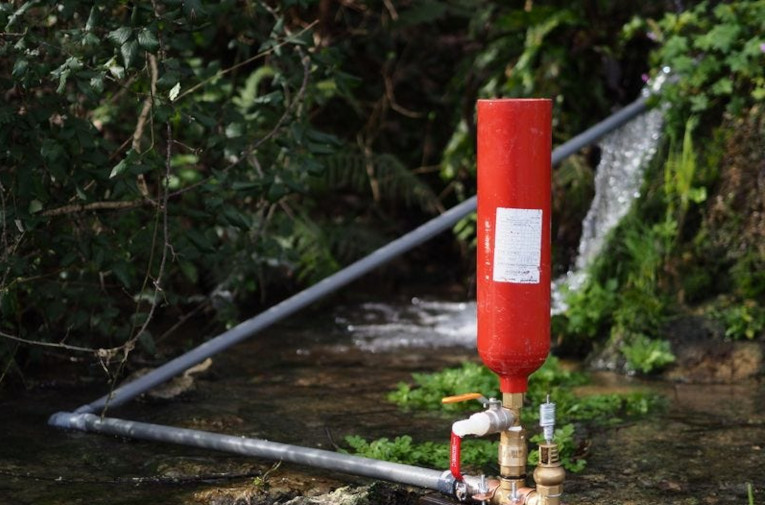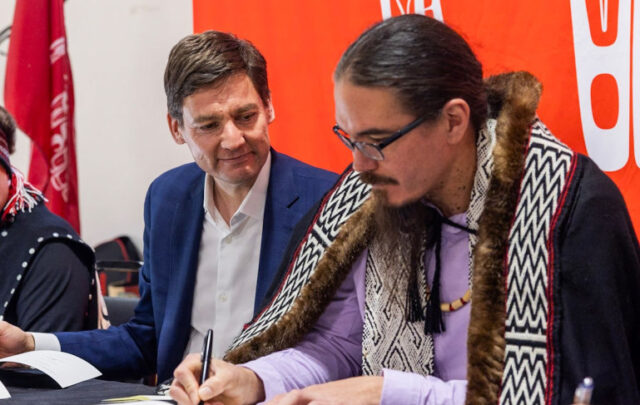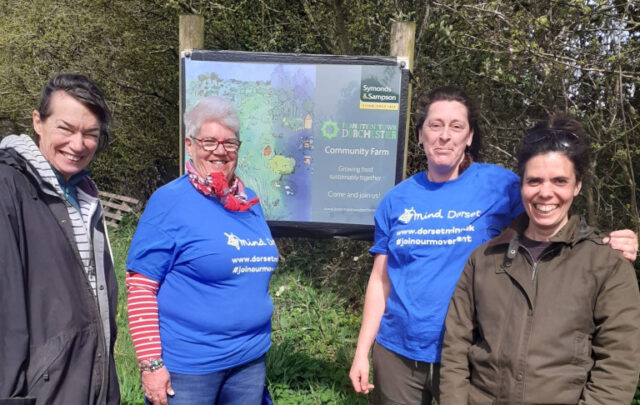We don’t need high-tech innovation to create a sustainable future for humanity. In fact, all the tech we need to regenerate our ecosystem and provide a good life for all already exists. In the interest of exploring the already-existing technology of the ecological future, I’ve written about three of my favorites.
Dovecotes
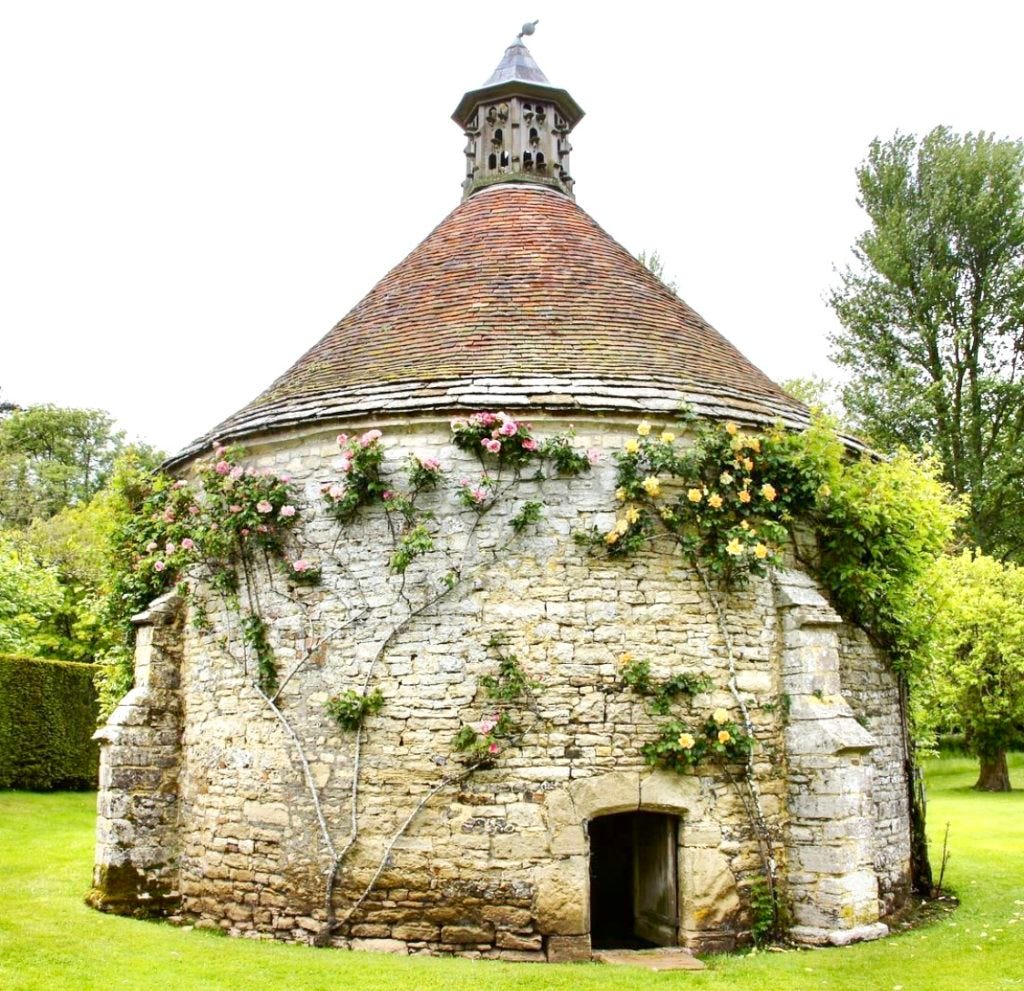
The dovecote is a tower filled with nesting sites for doves, placed where food and water is abundant, and where it is impossible for predators to wait in ambush. Doves move in, lay eggs, hatch chicks, drop manure, and generally just go about their business. The dovecote’s keepers enters whenever they wish to harvest eggs or doves or manure.
This represents a hybrid of domestication and hunting. Instead of raising birds as livestock, it simply provides them with a safe, comfortable home in a desirable location. It eliminates the need to feed them, water them, attend to their veterinary needs, or do anything else one would typically do for livestock The inputs are as low as can be. Even if the birds are feeding from cultivated fields, the harvesting, processing, storage, and distribution of their food is no longer necessary. That’s a lot of work saved.
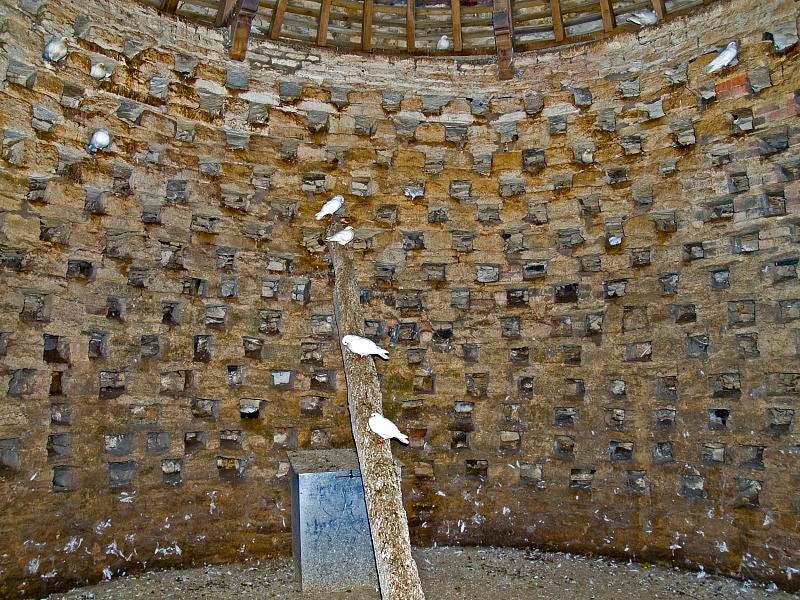
The outputs are remarkably high and easy to obtain. Instead of the time-consuming business of hunting, the keeper just strolls right in and takes what he wants. There’s meat, eggs, feathers (used for insulation in comforters, jackets, etc), and manure all at hand. The manure is an especially potent and sustainable fertilizer, conveniently deposited in a tidy pile at the center of the dovecote (it is, in fact, so potent that it once served as the primary raw material for gunpowder, which made dovecotes critical military infrastructure.)
The dovecote shows what is possible via low-input ecosystem management, and it’s a proven success. Bring back the dovecote!
Trompe
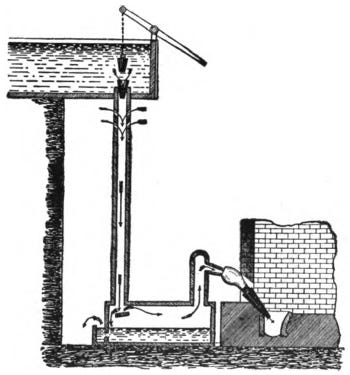
The trompe—or “hydraulic air compressor”—converts falling water into compressed air. It’s been around since at least 1588, but probably much longer. It’s a simple series of pipes with no moving parts: all that’s required is gravity, water, and air. The mechanism is straightforward: as water falls inside a pipe, air is mixed in, which is then compressed by the force of the falling water. The water and air are separated at the bottom by their own differing weights. You are then left with a stream of water and a flow of compressed air; this continues indefinitely.
This process requires no other inputs, and its output is wildly useful. Compressed air can function as a mechanical battery, which is an extremely useful resource. While falling water can of course be converted into mechanical or electrical energy on its own, storing it is complex, requiring either batteries or pumps coupled with vast reservoirs. Compressed air merely requires a pressure vessel. And once its stored, compressed air can be efficiently distributed up to 15 miles(!) away.
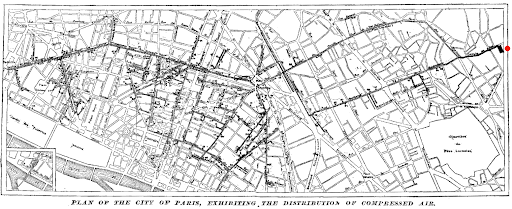
The energy in compressed air can be extracted countless different ways. It can directly power everything from power tools to blast furnaces, allowing for an emission-free source of power for high-energy applications. It can also be converted into electricity via a turbine. And a trompe can scale as large or as small as you want, so long as you have a suitable source of water. This flexibility in scale and application means a trompe can power everything from a small workshop to a giant electrical grid.
One of my favorite applications for the trompe is an electricity-free air conditioner. Since the air compressed in the trompe is cooled by the water, the constant flow of artificial wind it produces is much colder than the ambient air. This can easily be supplied to the inside of a building.
The biggest limitation to the trompe is that it is location dependent. But this merely points to the fact that high energy applications should be located where they are energetically and ecologically appropriate, rather than where they are most profitable for capitalists. In an eco-socialist society, rational use of energy would guide the location of such uses, giving rise to workshops and factories clustered near the largest trompes.
For much more on the trompe and the potential for a compressed air economy, I strongly suggest the always essential Low Tech Magazine.
Ram pump
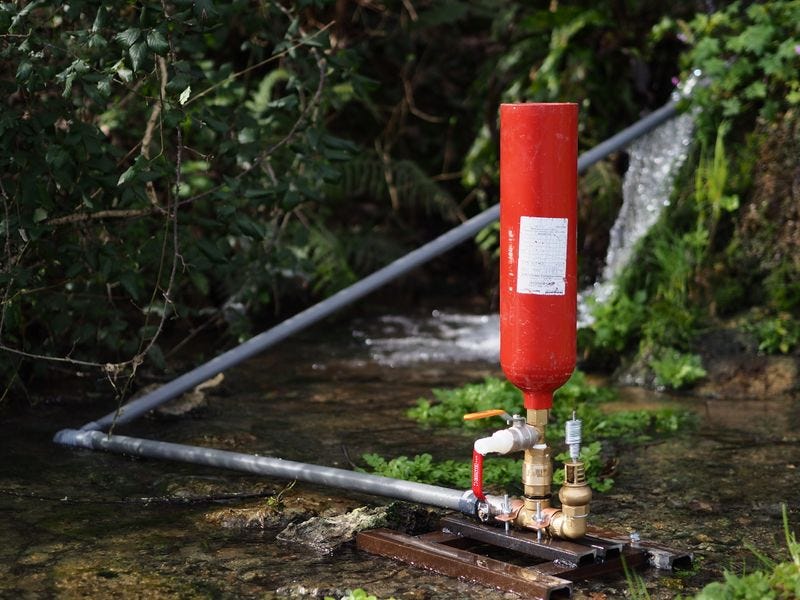
Here we’ve got another miracle made possible by falling water: the ability to pump water uphill without electricity. It is another criminally underutilized bit of truly sustainable tech that has been around for at least 150 years.
The ram pump is a bit more complex than a trompe, but it operates on the same principle: the force of falling water (6 feet or more) is used to create a water hammer with a series of valves, which then compresses air, which then drives water uphill. It uses no inputs other than the flow of water itself, and it can pump water much further up than the initial drop used to initiate the pump.
The ram pump runs continuously at a low volume, making it possible to move large quantities of water for irrigation or storage without any fuel or electricity. Again, this can be something tiny or something rather large, depending on the application, but the technology has a very broad range of uses.
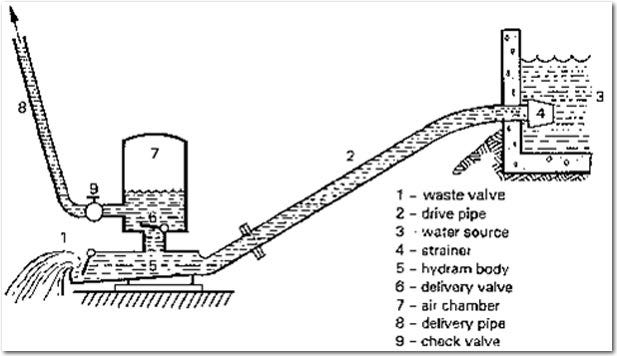
There’s the obvious uses for water—drinking, irrigating, etc—but like compressed air, water stored uphill is also a mechanical battery. It can be used to supply power when the sun isn’t shining or the wind isn’t blowing. It can be used to generate mechanical power to run any number of things: a grain mill, a power hammer, a pulley-system, and so on.
Ram pumps require no special knowledge or tools to build, and they are cheap. A trip to the hardware store and roughly $100 will get you one in an afternoon.


